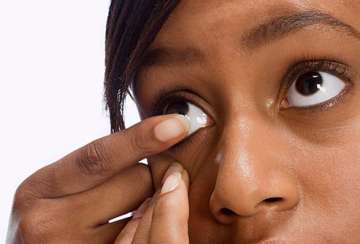Owing to poor hygiene, contact lens wearers in the UK are more at risk of developing a rare but preventable eye infection that can cause blindness, researchers have warned.
The team from the University College London (UCL) found that the risk of developing the disease -- Acanthamoeba keratitis -- was more than three times greater amongst people with poor contact lens hygiene, people who did not always wash and dry their hands before handling their lenses.
Showering and face washing while wearing contact lenses are also likely to be risk factors.
The eye disease causes the front surface of the eye, the cornea, to become painful and inflamed, due to infection by Acanthamoeba -- a cyst-forming micro-organism, found more in the UK than in other countries.
The study showed a threefold increase in Acanthamoeba keratitis since 2011 in South-East England.
"This increase in cases highlights the need for contact lens users to be aware of the risks," said lead author John Dart, Professor at the UCL.
"It is absolutely imperative that regulators and those working in the optical sector take the findings seriously, and use the recommendations to take immediate and urgent action on prevention.
"Contact lenses are medical devices and should be supplied with warnings regarding safe use," he added.
People who used a lens disinfectant product containing Oxipol (now phased out by the manufacturer), and those who wore their contacts while in swimming pools or hot tubs were also found to be at high risk.
"People who wear reusable contact lenses need to make sure they thoroughly wash and dry their hands before handling contact lenses, and avoid wearing them while swimming, face washing or bathing.
"Daily disposable lenses, which eliminate the need for contact lens cases or solutions, may be safer and we are currently analysing our data to establish the risk factors for these," Dart said.
For the study, published in the British Journal of Opthalmology, the team collected incidence data from 1985 to 2016 in the country.
They found an increase dating from 2000-2003, when there were eight to 10 cases per year, to between 36-65 annual cases in the past few years.
(With IANS Inputs)

